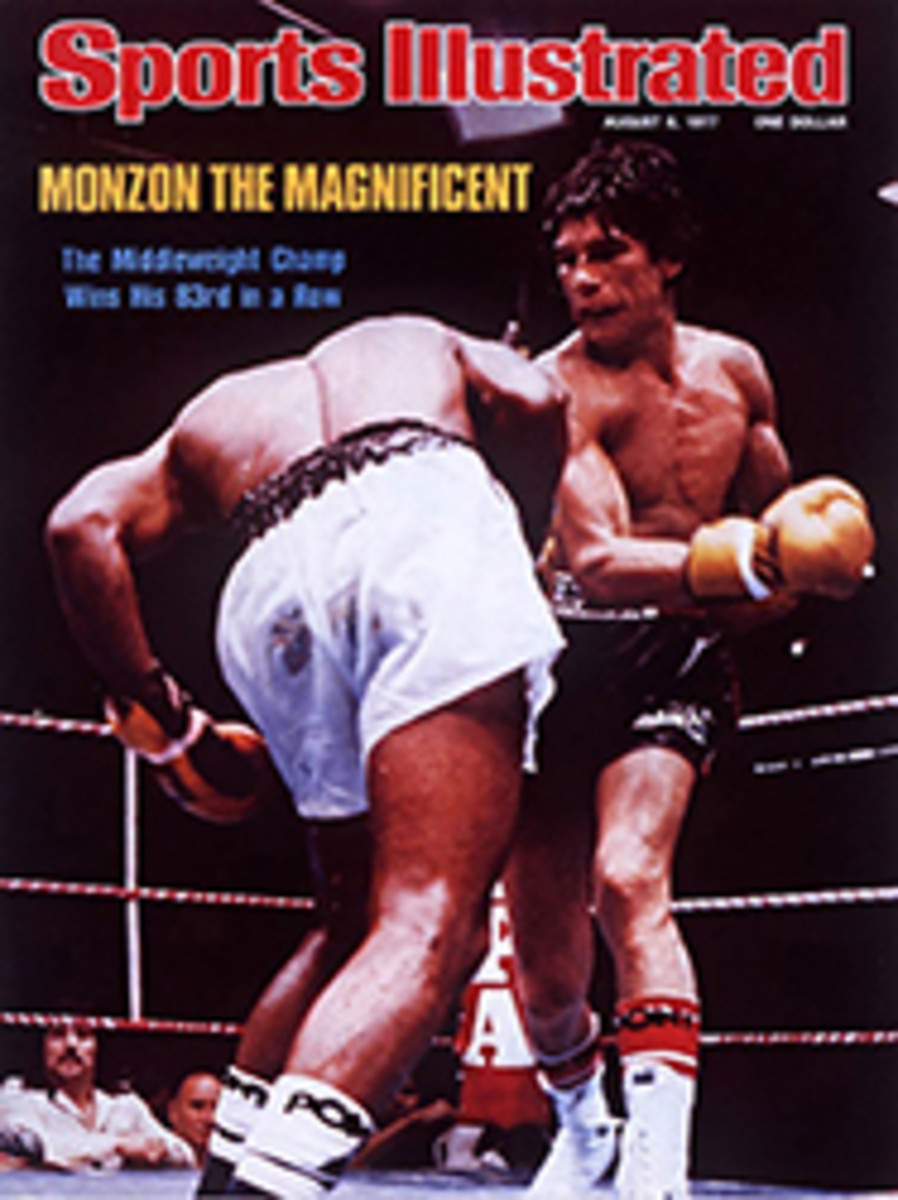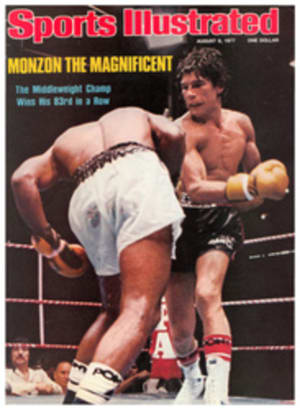
SAILING ON A SEA OF PERPLEXITY
The cup. The cup. The cup. Short of hiding under a bed, in Newport this summer it is impossible to escape the fact that this is an America's Cup year. The flags of France, Australia and Sweden, the three challenging nations, float in the air. Pictures of 12-meter hulls, past and present, foreign and domestic, hang everywhere. In bars and bistros the homely old cup itself is depicted on cocktail napkins; the lore and legend of it are printed on the place mats.
Although the cup permeates Newport, it does not quite dominate it. This summer, as in any other, hippies ripsnort around town on Hondas and Yamahas, creating noise and occasionally colliding with slower-moving objects, and tourists with Nikons around their necks clog the streets, intent on capturing the whole scene and buying out the town.
On a fine July evening a sunbaked hippie, astride his parked Yamaha, spies three 12-meter crewmen as bronzed and long-haired and bare-legged as himself entering a drinks-free party on Thames Street. To his ladylove, seated aft and clutching him around the waist, the hippie observes dryly, "There go three of the America's Cup yachting swells." In the parking lot of Mac's Clam Shack, a lady wearing fuschia tennis shorts sees Enterprise, one of the prospective U.S. defenders, suspended on her hoist after a day of toil. "Why is that boat hung in the air like that?" she asks. At the sight of Enterprise, the lady's escort starts photographing it with a telephoto lens half the length of a spinnaker pole. "It's out of water to keep barnacles from eating holes in it," he says between shutter clicks. "That's one of the boats trying to win the Davis Cup."
On the Atlantic off Newport last week, three U.S. boats—Enterprise, Courageous and Independence—completed the second of three sets of trials to select a defender, and the four foreign hulls—France II, Australia, Gretel II and Sverige—are just now starting their first round-robin series to pick a challenger. With so much action so early, the U.S. Coast Guard already has its hands full, doing its bellowing best with bullhorns and on selected crystal frequencies to keep the sloops and ketches and gin palaces and lesser stinkpots of the spectator fleets in line. (One never knows what effect an errant spectator boat may have on a match race. In one contest of the most recent U.S. trials, Ted Turner, skipper of Courageous, trailed Lowell North on Enterprise by one minute 20 seconds at the last turning mark. Then, on the final leeward leg, Mariner, the sassy red 12-meter dud that Turner had vainly sailed three years ago, suddenly cruised onto the course ahead of them. As if inspired by the sight of his former coffin crossing his path, Turner closed to within seven seconds of North at the finish line.)
Considering the damage that the wake of a single blundering power boat can do at a crucial moment, it is fortunate that everybody who gets a taste of the America's Cup ashore doesn't have access to the course—fortunate and yet a pity, for this is already proving to be a memorable, record-breaking year. In the 107 years since the cup first was contested, this is the first time that prospective challengers have outnumbered the defenders. Because there are only three potential defenders this time, each has had one day of enforced idleness out of every three. Even so, in the Preliminary Trials of June and the Observation Trials of July the three hulls have competed in a record 32 races. The memorable duels of cup boats in the past pale in comparison. In 1958 Columbia and its vintage rival, Vim, met 10 times in orthodox match races, and so did Constellation and American Eagle in 1964. In 1974 Courageous and Intrepid dueled 19 times. This summer the two leading yachts, Courageous and Enterprise, have already met 12 times and the August finals are yet ahead.
More pertinent is the closeness of the competition. In previous years there has always been a whipping boy—an Easterner, Heritage or Mariner—that because of poor handling or design never had much chance. This time around, there is no patsy. There have been no painful parades to the finish line with winning margins of three, four and five minutes. In 19 of the 32 races this summer the difference has been less than a minute; in 11 of them less than half a minute. The match-racing bible says that the skipper who clearly wins the start or establishes a solid lead on the first windward leg will usually prevail. In 19 of the 32 races the lead changed on the first leg or beyond, and in eight of the races it changed twice or more.
In the June trials Courageous had seven wins and one loss, Enterprise stood 4-6, and Independence finished 2-6, but anyone observing these races recognized that there was more disparity in the results than in the boats themselves. In the first three days of the July trials, it looked as if Courageous was on her way once again. She was first across the finish line four straight times (albeit losing one race to Enterprise on a disqualification), while Independence and Enterprise split a pair. Then, slam-bang, on the fourth day Enterprise walloped Courageous twice, in one of the races by two minutes 46 seconds, the widest margin to date. Suddenly it looked as if Enterprise, which in June had seemed to wander on the course in defiance of logic and classic precepts, was finally putting her act together. The odds tilted even more in her favor on the fifth day, when Courageous, the pacesetter, had to battle hard to win two from the tailender, Independence, by six and 18 seconds. So what happened on the sixth day? Independence, the tailender, turned around and whipped the up-and-coming Enterprise twice by wide margins to throw the whole thing back into a cocked hat. In the July trials Enterprise beat Courageous 5-2, Courageous beat Independence 5-1, and Independence beat Enterprise 4-2, so this is but a brief armistice in an unsettled three-sided war.
In their dealings with the press all three skippers have been most courteous and, despite their diverse psyches, at times equally ambiguous. When asked what he thought of his prospects in the Final Trials, Skipper Ted Hood of Independence, a man not given to elastic facts, said, "Overconfidence is not going to be one of our worries." After North and his brain trust aboard Enterprise had solidly squashed Courageous twice, the press at dockside wanted to know how they had turned the tables so brilliantly. With his customary direct look and steady voice that usually conveys wisdom, North replied, "I don't know. Maybe it was because we were going faster or Turner was going slower. One or the other. I'm not sure which." Thus enlightened, the press sped off to spread the word to the waiting world.
After Turner had whupped Independence twice, the gentlemen and gentlewomen of the press wanted to know what he and his tactician, Gary Jobson, had discussed in their prerace t√™te-√†-t√™te. Without pacing more than a quarter mile up and down the dock. Turner replied, "What did we talk about? Well, we talked about how great it was to face fearful odds for the ashes of our fathers and the temples of our gods. In fact, on the way to the dock this morning Gary and I went right by the Catholic church and listened for a moment. We talked about everything—ships and sealing wax, cabbages and kings." Thus blessed with cogent tidbits of irrelevance, the press thanked Turner and withdrew, each to write the truth in his own way.
What is the truth? The evidence at the moment is insufficient for a well-rounded judgment, particularly because the boats have had only eight races in heavy weather, and most of those with the wind offshore and the seas comparatively small. What evidence there is suggests that Independence is the boat of least potential. She will have to scramble all the way. Quite beyond her won-lost record is the fact that in six races she had a definite, although slim, lead somewhere along the first windward leg and could not hold it—in one instance Enterprise was able to sail through the tail of her wind shadow to leeward.
Courageous is the boat that knows how to do it, but considering both the excellent helmsmanship of Malin Burnham and the broad genius of Lowell North, Enterprise is the boat of greater potential. In the middle of the July trials they had it all together, but in the final race it came apart again. Three times in that race Enterprise took the lead away from Courageous, and three times gave it back. The Enterprise people confess that they are learning the hard way. That is a tribute to them, but it will not be worth much from here on in. The final bell has rung. School is out; learning time is over. August is real. August is for keeps.
PHOTO
ERIC SCHWEIKADT
Storming down a spinnaker leg on a windy day, Enterprise (27) leaves Independence in her wake.

